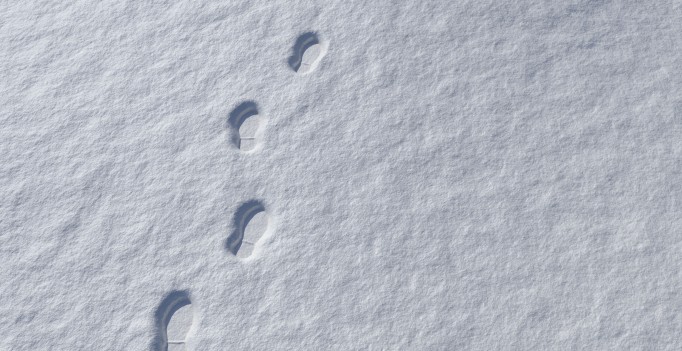Worms are one of Mother Nature’s original recyclers. For millions of years they’ve been hard at work turning organic material into nutrients for the soil. And if you’re a gardener, chances are you have a few hundred working in your own worm bin, churning your table scraps into mineral-rich compost. But what happens to your wigglers during the winter months? Normally, worms prefer to spend the winter deep underground where it’s nice and warm. That means your best bet for keeping your worms productive (and alive) during the cold season is to make sure the bin is properly insulated to retain heat. To help you prepare your bin for the cold weather, we at Squirm Firm put our heads together to come up with the best ways to keep your worm bin at the proper temperatures:
1. Pack In Extra Insulation
Add insulation to your bin to help it retain heat better during the icy months. Try spreading vacuum cleaner bags, old socks, blankets, sheep’s wool, or pieces of carpeting on top the bin to form a protective layer from the cold. If it’s still early on in the season, you can start adding a few of these every few weeks for the worms to disperse throughout the bin. Don’t forget, insulating the outside of your bin can be just as important as the inside. We’ve heard of gardeners covering their bins with everything from hay barrels to tarps to cow manure. Whatever you use, don’t pile it up too much or else your worms will have trouble getting sufficient air and moisture.
- Squirm Tip: Fall leaves aren’t just pretty for looking at – they can also provide a crucial heat source to help your worms weather the winter. Make the most of your foliage by filling your bin with large amounts of leaves and other yard waste.
2. Place Your Worm Bin Next to Heating Vents
Chances are if you’re reading this, you live in a place where you’ll be trying as hard as your worms to stay warm this winter. One of our favorite tricks for keeping temperatures up is storing the bin next to the external exhaust vent of our heating system. That way when the heater is on (which is often!) the bins are absorbing heat from the air discharged outside. Not only do you get to reuse some of that hot air you’re paying for, you also get to take the edge off those bitter cold nights for your worms.
3. Go Floorless
It’s generally a good idea to make your outdoor worm bins floorless so that your worms can burrow into the earth when needed to stay warm. Being able to wriggle down to safety during cold snaps and extreme temperatures is crucial for your worms’ survivability during the harsher months. We recommend either purchasing a floorless bin or cutting the floor out of whatever container you’re using to keep your worms in. Remember: even a full and well-insulated worm bin can seem colder to a worm than a few inches of solid earth.
- Squirm Tip: For even more heat retention, try digging a hole in the shape of your worm bin in the ground and then placing your bin inside it. The hole can be anywhere between two inches deep and half the height of your worm bin. We recommend lining the hole with a thin layer of plastic material before packing your bin in to help prevent moisture from getting inside.
4. Install a Heater
If you’re the sort of worm parent who likes to make sure your babies have the best of everything, you might consider buying or building a worm heater. These usually incorporate the same heating coils you’d use to warm seed trays inside a greenhouse, except that you place them on top of your worm bin. Warming mats and even electric blankets can also make good alternatives, although we recommend you pick something with a built-in thermostat to prevent you from having to run out during a blizzard to turn it on.
5. Go Easy on the Food Servings
Once the temperatures begin to drop, you’ll start to notice that the worms aren’t producing compost quite as fast as they used to. Like a lot of insects, worms naturally slow down their metabolism during the colder months to help conserve energy – but so long as your worm bin is kept nice and warm, those little mouths will expect to be fed. To maximize your compost production during the winter, feed your worms smaller portions of food which has already been broken down in a blender or food processor. That way, your worms’ digestion won’t have to work so hard to convert your food scraps into rich compost.
Follow these steps and your worms will be busy producing compost well into the winter. Don’t forget: Mother Nature has been taking care of her worms for a very long time. If conditions get too cold, your worms’ biological clock will kick in, causing them to reproduce in a hurry to make sure their DNA is carried on to the next generation. While this may be sad for the worms, it means that you’ll have a new batch ready to churn out fresh, high-quality compost for your garden in the spring.
Here at the Squirm Firm, we take serious interest in sharing our passion for worm composting with the world. If you know others who could use this information, please join us in our mission by sharing it on your favorite social networks. Thanks!
Article by Donny B


Can you insulate the sides with cardboards…
Hi Orvin. Using layers of dry cardboard can be a very good insulator. But if you are talking about something that is outside and can get wet, that would no longer provide good insulation. Depending on the severity of your climate, and exposure to it, cardboard can be perfect, or ineffective.
I’m here in NC trying to make a worm farm. any ideas of how to do that in a flower pot?
Hello, Mannix. To create a worm farm out of a flower pot you would first want to choose something the size of a 5 gallon bucket or so. Worms will quickly reproduce and create a significant amount of compost. From there, be sure to have lots of good drainage out of the bottom. After this, you are ready to treat the flower pot just like a storage tote worm bin. Check out this article to find out more! Enjoy your new worm bin! https://thesquirmfirm.com/category/setting-up-your-worm-bin/
I purchased de-icing cable 40 long, it automatically come on when temperatures are <35 degrees. I have 2 30 gallon plastic tubes and wrapped the two tubes with the cable. I also filled the tubes up with shredded paper and leaves. I then cover the tubes with a large refrigerator card board in half and placed over the tubs and a moving blacket then a tarp the temperature stays about 50-55 degrees there is plenty of air holes in tubes and the worms are surving through our cold temps of 15 – 40 degrees with snow and I in lower DELAWARE.